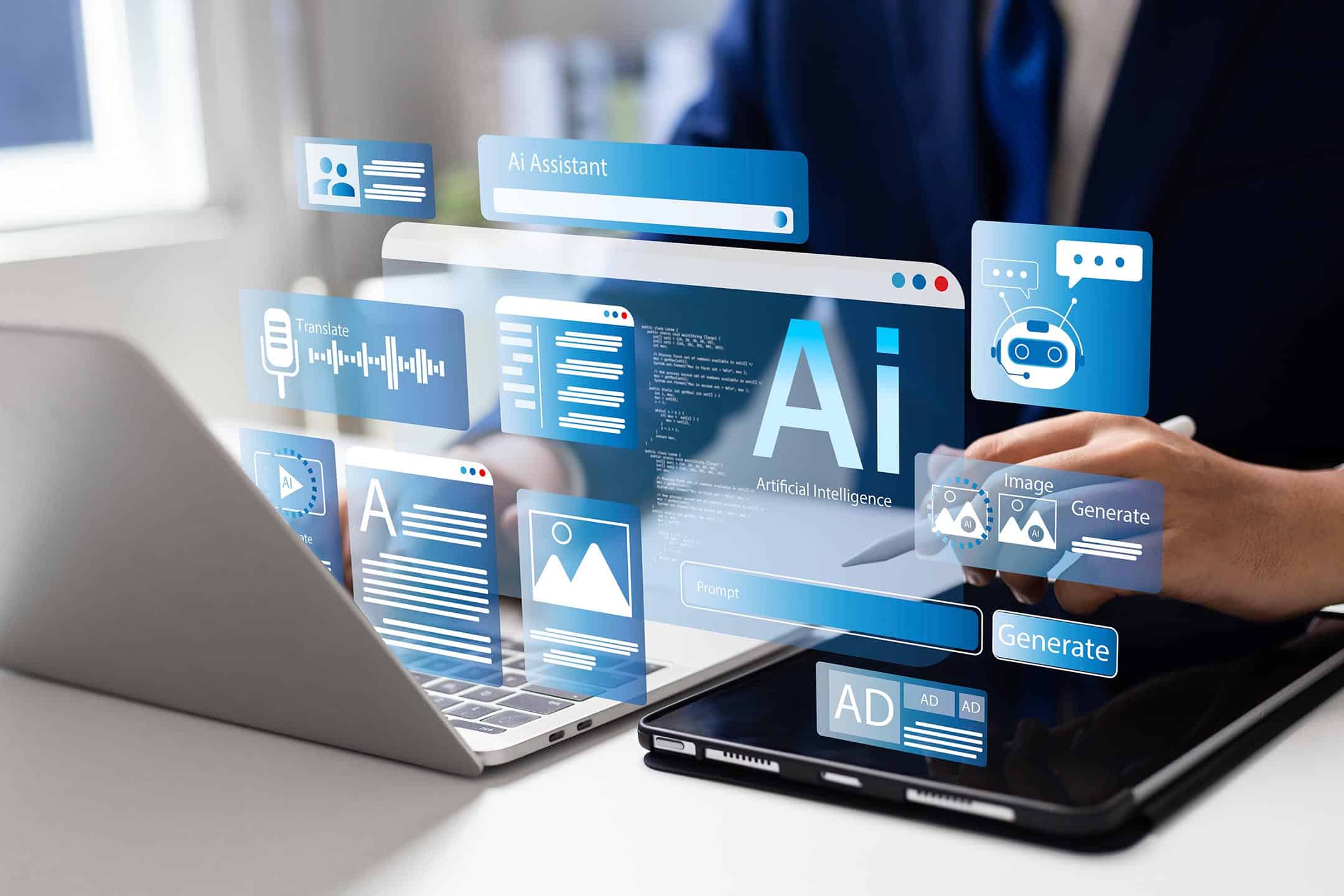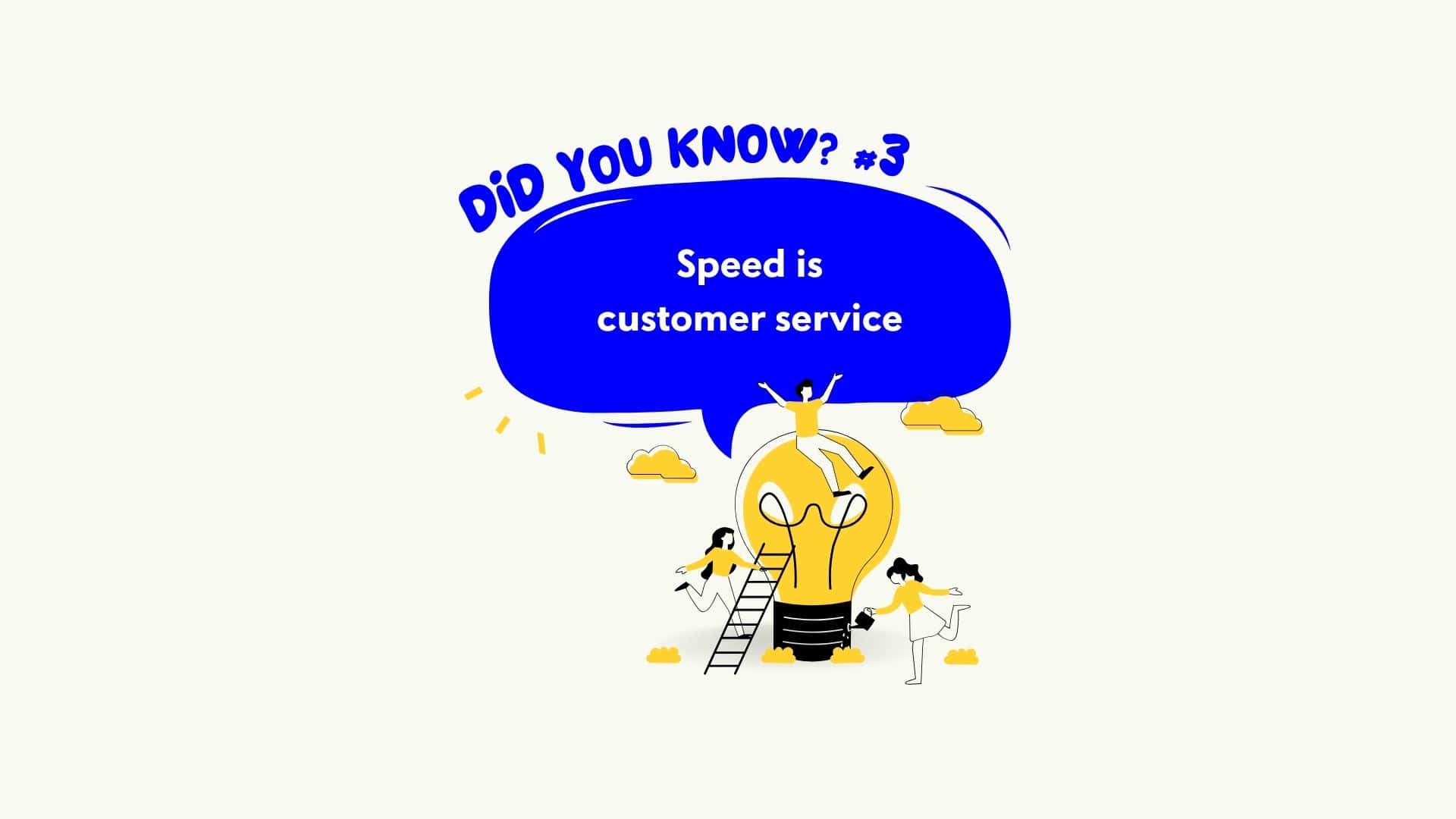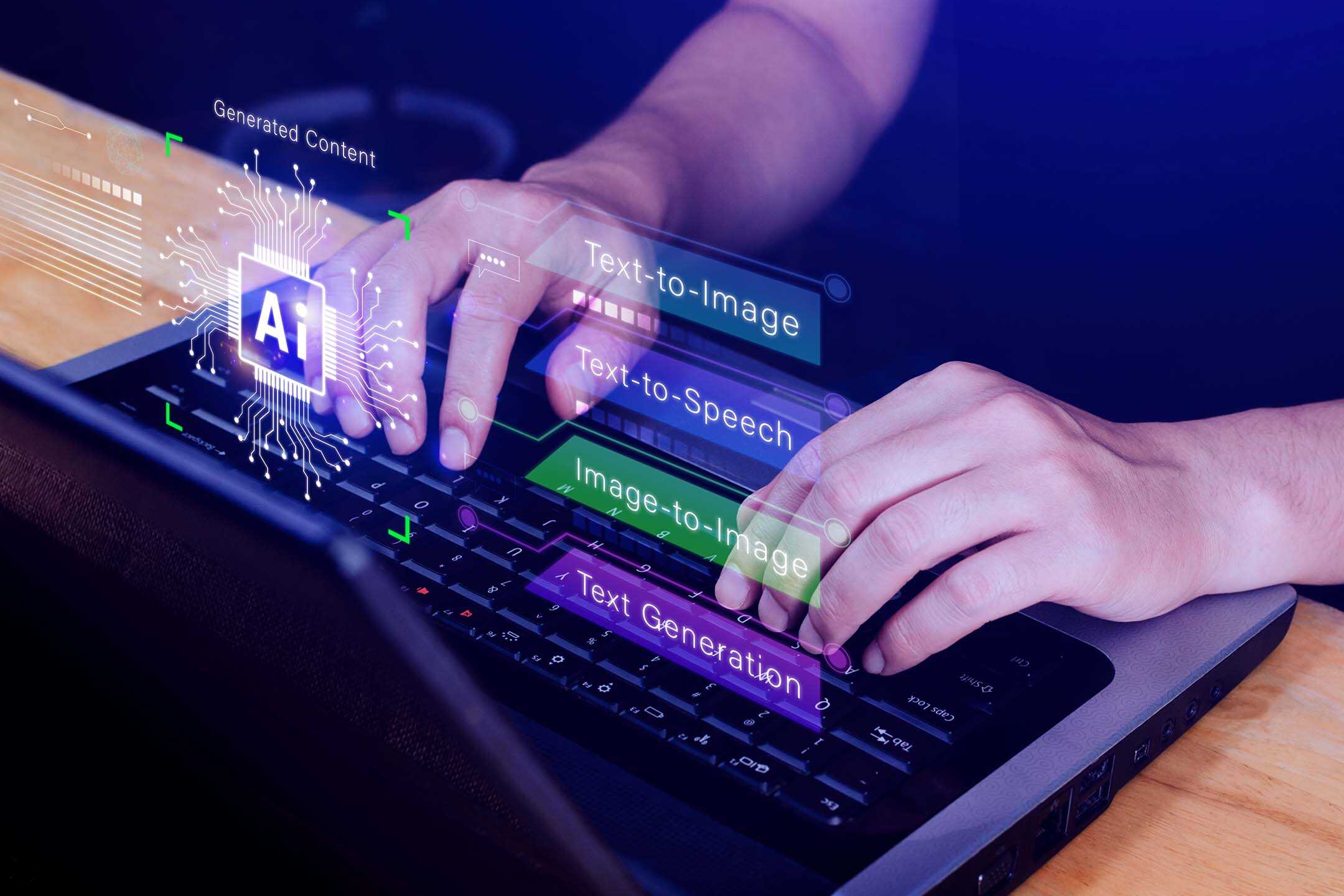It started with a simple question: “How do we get our time back?”
One of our clients was slipping behind – not because of a lack of ambition, but because of everything else. Admin piled up. Customer queries pulled focus. Staff absences stretched resources even further. The team was busy, but the business wasn’t moving forward.
We built them a solution: a Custom GPT trained on their services, tone of voice and internal processes. One AI assistant, designed specifically for them.
It handled routine emails. Answered complex queries across departments. Freed up the team to focus on what really mattered – like responding to new patient enquiries. Sales improved. So did morale.
This wasn’t a dramatic digital overhaul. It was a smart shift – and it made a real difference.
Custom GPTs are changing how businesses operate. They’re not off-the-shelf tools. They’re strategic assets – trained to think, respond and act like part of your team.
And right now, they’re one of the most powerful opportunities in business. Because AI is no longer something to watch. It’s something to use.

Understanding Custom GPTs
So what exactly is a Custom GPT and how is it different from the ChatGPT you might’ve dabbled with?
In short: it’s not generic. It’s yours.
A Custom GPT is a version of ChatGPT that’s been fine-tuned to your business – using your language, your data, your workflows and your brand voice. Unlike the standard model, which is built for everyone, a Custom GPT is trained to operate like someone on your team. It doesn’t just “chat”. It works. And it works with context.
This marks a major shift: we’re moving from general AI to personalised AI. From broad capability to specialist performance.
What can a Custom GPT actually do?
- Generate emails and reports in your tone of voice
- Answer internal team queries based on your knowledge base
- Draft content or marketing copy that sounds like you
- Interpret complex business data and turn it into insight
- Support sales or support teams with consistent, instant replies
Real-world examples are already emerging across industries. Law firms using GPTs to generate templated legal drafts. Healthcare providers using them to handle patient queries. Agencies (like ours) using them to automate operations without losing human nuance.
The point is this: AI doesn’t need to be a threat or a gimmick. When it’s customised, it becomes infrastructure – saving time, improving quality and giving your team room to think.
This is the next stage of digital maturity. And the sooner businesses adapt, the further ahead they’ll get.
The Business Case for Custom AI
Let’s talk about return on investment – because that’s what matters.
Implementing a Custom GPT isn’t just a tech play. It’s a strategic move that directly impacts time, cost and output. And the numbers are compelling.
Start with time. A well-trained Custom GPT can handle routine tasks in seconds – from generating emails and reports to answering internal queries and processing data. That’s time your team can spend on higher-value work: client relationships, creative thinking, sales. In our own projects, we’ve seen GPTs reduce task time by over 80% – turning hours into minutes.
Then there’s cost. Off-the-shelf AI tools offer surface-level support, but they can’t think like your brand or operate in your workflow. Custom GPTs cost more upfront, yes. But they scale. They evolve. And they replace the need for multiple tools or external resources. Over time, the value gap grows in your favour.
Businesses using OpenAI’s models strategically are already pulling ahead. They’re building internal GPTs to support teams, streamline operations and make better, faster decisions. They’re not just working harder, they’re working smarter.
Take our client from earlier. Before the GPT, delays were costing them opportunities. After we implemented their custom solution, they had more capacity, more conversions and a faster response time than ever before.
Or look at firms using GPTs to automate onboarding, financial services, content production – turning AI into a core part of the business, not an add-on.
The competitive advantage here is real. It’s not about having AI. It’s about using it better than your competitors.
Custom GPTs give you that edge. They become part of your infrastructure. And in a world moving this fast, every minute and every margin counts.
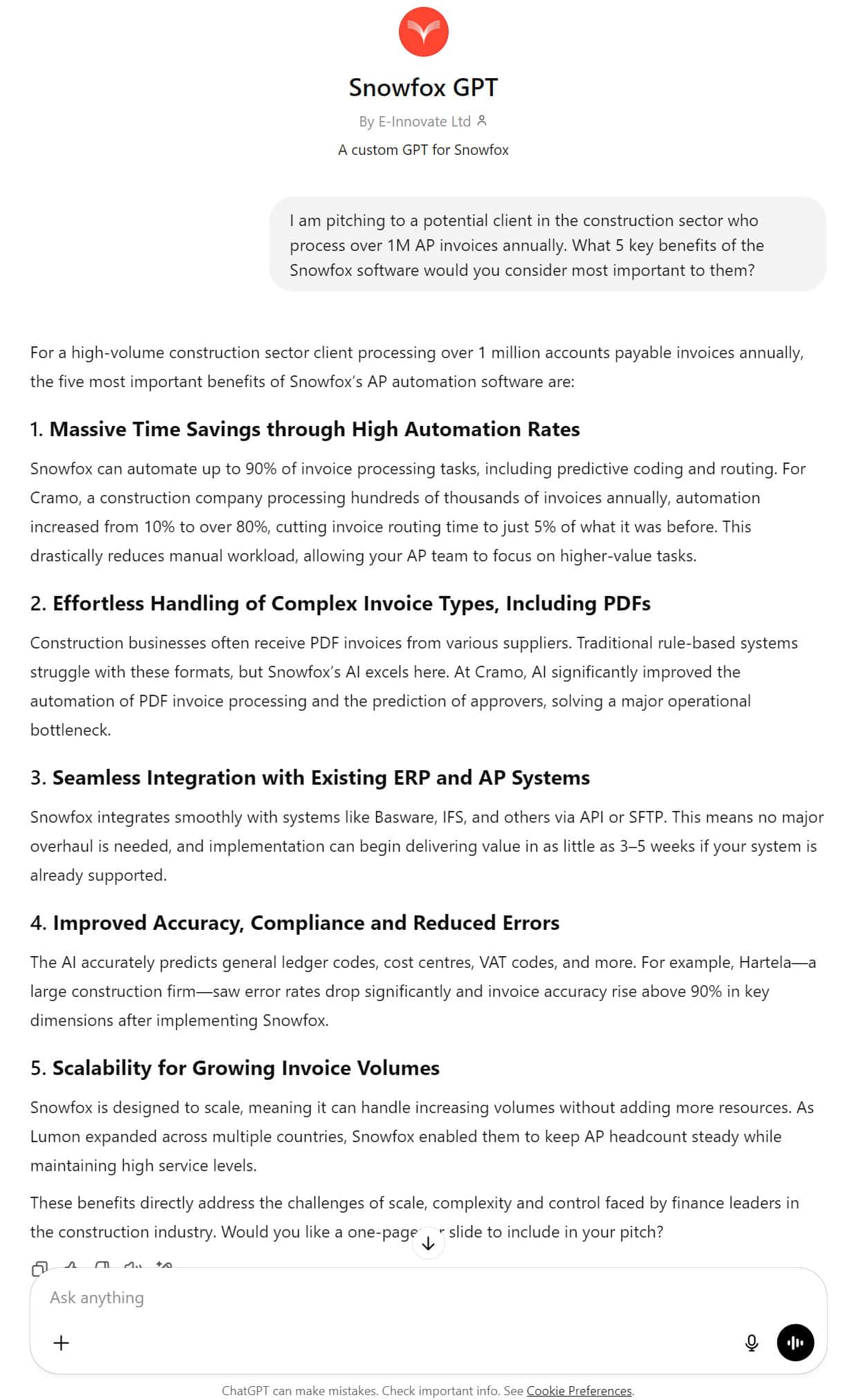
Building Your First Custom GPT
Creating a Custom GPT might sound complex but with the right approach, it’s surprisingly straightforward. And more accessible than most businesses realise.
Here’s how to get started:
Step 1: Define the Use Case
What do you want the GPT to do? Respond to customer queries? Generate internal reports? Support sales? Start with one clear goal – simplicity wins.
Step 2: Gather Your Data
This includes tone of voice guidelines, FAQs, service documentation, internal processes – the raw material the GPT will learn from.
Step 3: Choose Your Build Method
There are two paths:
- No-code (using OpenAI’s built-in tools) – ideal for lighter use cases like internal assistants or content generation.
- Technical implementation – offers deeper integrations and functionality, ideal for businesses with in-house dev teams or external partners.
Step 4: Test and Refine
Train it. Test it. Break it. Refine it. Like onboarding a new team member, it improves the more it works.
Step 5: Deploy and Monitor
Start using it in real workflows. Monitor performance. Keep iterating.
Resources Needed
- A clear brief
- Brand data and documentation
- Some technical support (even for no-code builds)
- Around 2–6 weeks, depending on complexity
Common Pitfalls to Avoid
- Trying to make it do everything on day one
- Feeding it vague or inconsistent source material
- Skipping user testing
Timeline
For most businesses, a functional Custom GPT can be live within 2–4 weeks. Larger builds may take longer, but momentum matters more than perfection.
Start small. Learn fast. Scale smart. That’s the formula.
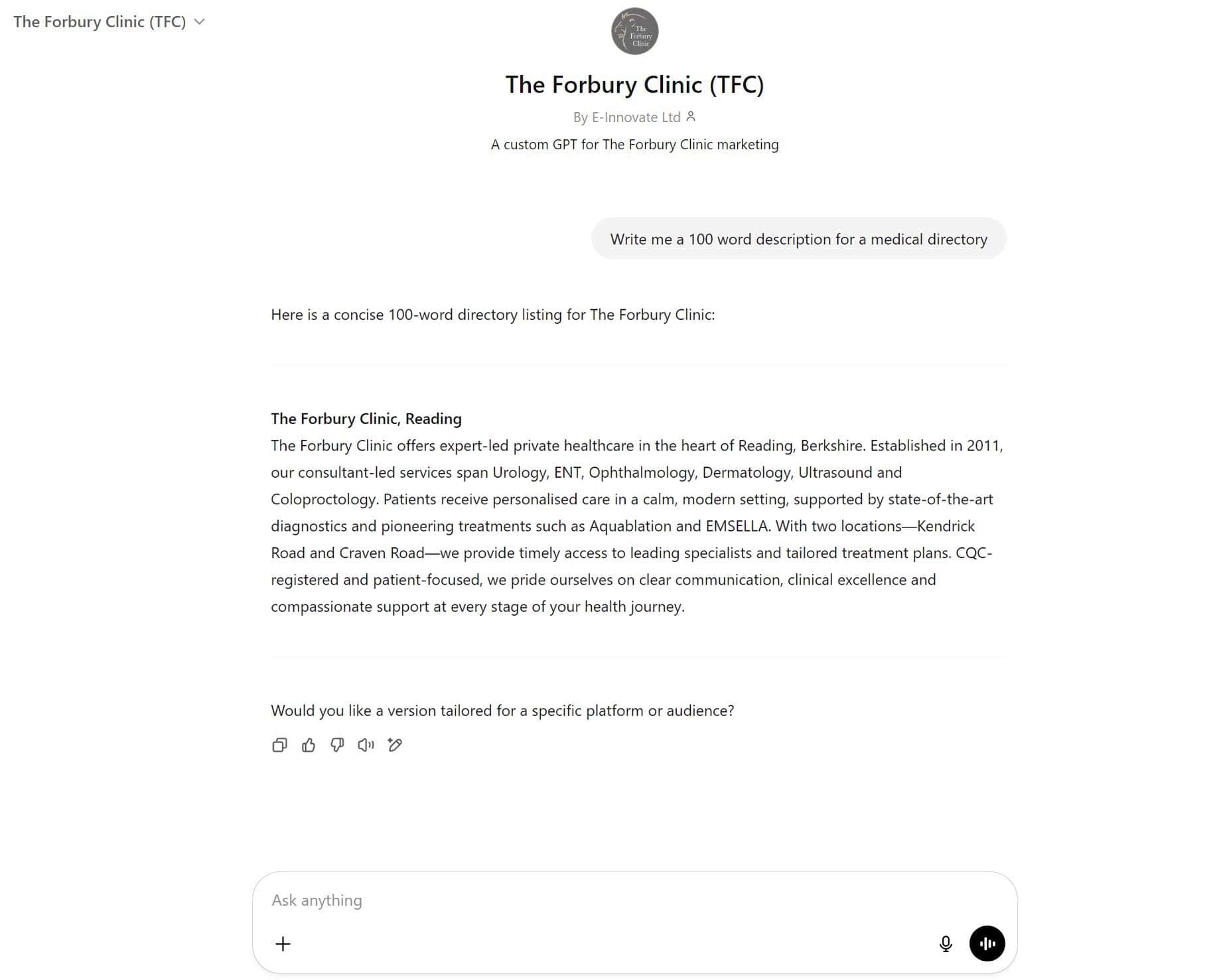
Five Possible Applications
Custom GPTs aren’t just shiny tools – they’re enablers of real transformation. Here are five ways they’re already reshaping how businesses work:
1. Customer Service, Reimagined
Traditional chatbots have limitations. They’re often clunky, scripted and inflexible. Custom GPTs change that. Trained on your service documentation, tone of voice and real FAQs, they deliver instant, human-sounding responses, 24/7. They can handle nuance, route queries intelligently and even escalate when needed. The result? Faster resolution times, reduced workload on support teams and consistently better customer experiences.
2. Marketing and Content at Scale
Marketing teams often face a bottleneck: content. A Custom GPT can generate emails, social posts, blogs and product descriptions in your voice, aligned with your strategy. It’s not about replacing creativity – it’s about removing the grunt work. Brief it once and it can repurpose campaigns, A/B test subject lines or adapt messaging for different audiences, fast.
3. Smarter Data, Real Decisions
Drowning in spreadsheets? A Custom GPT can turn complex data into simple answers. It can analyse reports, track performance, spot anomalies and surface insights in plain English. That means less time wrangling dashboards – and more time making decisions. For leadership teams, this becomes a strategic asset: your data, decoded on demand.
4. Operational Efficiency on Autopilot
From generating standard documents to drafting proposals or managing routine admin, GPTs can take on the repetitive stuff. Think of them as digital assistants – creating consistency, reducing manual input and speeding up delivery. One of our clients now uses a GPT to generate 80% of their outbound emails. The team? Free to focus on relationships, not responses.
5. Training That Scales with You
Onboarding new staff usually means lost time and duplicated effort. A Custom GPT can become an internal knowledge hub – answering questions about services, policies, systems and best practice. It reduces interruptions, improves accuracy and supports a culture of self-service learning. And as your business grows, it grows with you.
These aren’t future concepts. They’re happening now in real businesses, delivering real results. A Custom GPT isn’t just a cost-saver. It’s a growth lever, an efficiency driver and a quiet revolution in how work gets done.
Future-Proofing Your Business

AI isn’t a trend. It’s the infrastructure of the next decade.
Emerging tools like multi-modal GPTs, voice-enabled assistants and AI agents that can perform actions, not just answer questions, are already in development. Businesses that build AI literacy now will be ready to adapt as these capabilities go mainstream.
Staying ahead means more than adopting tools – it means embedding AI into your strategy. Build use cases with real ROI. Create internal champions. Keep your team engaged in the process. AI shouldn’t feel imposed, it should feel empowering.
That said, responsibility matters. Ethical AI use starts with transparency: how data is used, what tasks AI performs and where the human hand stays on the wheel. Trust is still your strongest currency.
As AI becomes more embedded, your team’s role will evolve – from doers to overseers, from operators to orchestrators. Upskilling should be part of your AI roadmap, helping people adapt rather than fear the shift.
The long game? It’s about integrating AI into your culture, systems and mindset. Not as a bolt-on, but as a strategic layer in how your business thinks, grows and delivers.
The future won’t wait. But you can be ready for it.
Don’t Watch the Wave, Ride It
Custom GPTs aren’t tomorrow’s tech, they’re today’s unfair advantage.
We’ve seen what happens when a business stops waiting and starts implementing. Productivity climbs. Bottlenecks disappear. Teams get time back to do their best work. And clients notice the difference.
The businesses pulling ahead aren’t just “using AI”. They’re integrating it. Training it. Making it part of the culture – not a bolt-on, but a competitive edge embedded into the way they operate.
This is about more than automation. It’s about evolution.
So here’s the call to action: start small, but start now. Pick a process, a pain point, a repetitive task – and build your first Custom GPT around that. Learn what it can do. Then scale.
Don’t wait for AI to become the industry norm. By then, the gap will be harder to close.
This is your moment to lead, not follow. To be the business that adapts early, works smarter and grows faster – with AI as your accelerator, not your replacement.
If you’re ready to explore what a Custom GPT could do inside your business, let’s talk.
